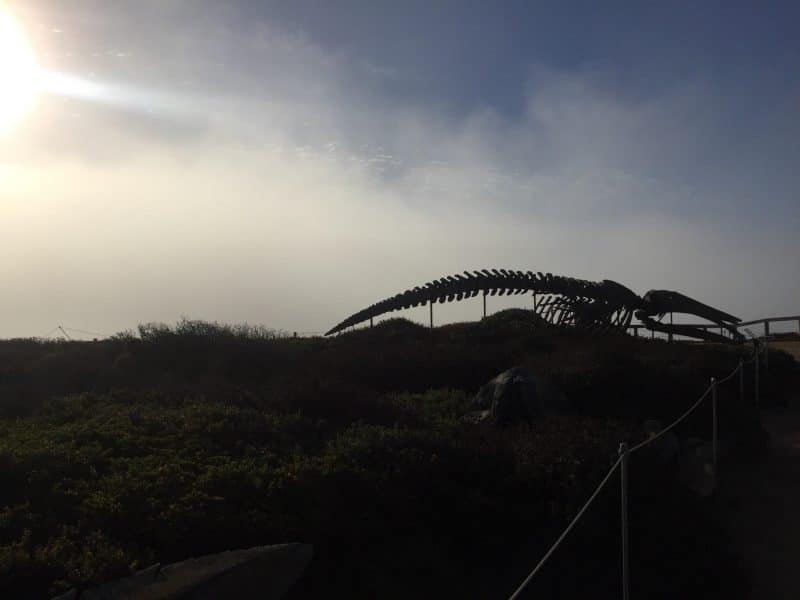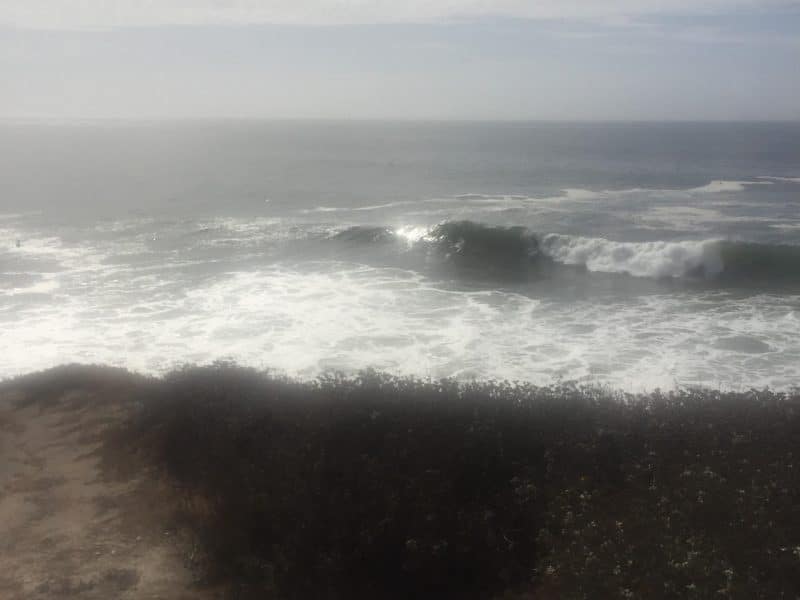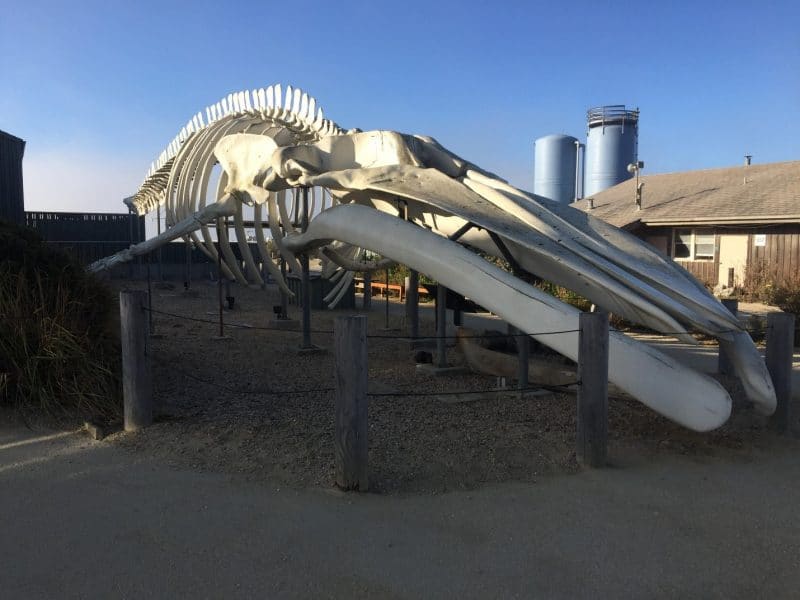RCN Exchange to University of Santa Cruz – October 2019: Lab exchange with Dr. Ari Friedlaender (Cetacean Ecologist)
During my lab exchange, I met with Dr. Ari Friedlaender and his doctoral student, Logan Pallin, to discuss a collaborative project examining blubber plugs from humpback whales (Megaptera novaeangliae) in Antarctica for hormone concentrations. Dr. Friedlander and Mr. Pallin have been collecting blubber biopsies from whales summering in Antarctica for the past 5 years and have approximately 1,100 samples. Since their laboratory mostly focuses on telemetry and behavior, I traveled to the University of Santa Cruz to determine how I could assist them in processing, and Mr. Pallin could teach me their protocol for extracting the blubber. After our meeting, we decided that we would collaborate on different projects.
The first project is analyzing cortisol levels for samples from 2015-2017 (total of 242 samples) to determine if there are correlations in the population or within individuals between years. Individuals are known post-biopsy from genotyping performed at Oregon State University in Dr. Scott Baker’s laboratory.
The second project is to analyze progesterone to look at pregnancy rates in the population. Mr. Pallin has started this project and examined 37 individuals but had assay failure due to reagent issues. We will assay progesterone in 75 females and compare results between the assays. Since Mr. Pallin is using a different assay company, we will have to do a cross validation to compare how the two kits differ.
The third project is to examine T3 in a variety of samples as a preliminary test to see if T3 is easily detectable in blubber and what the range of values include. We selected whales that had been analyzed via photogrammetry for body condition.
Assays will begin immediately, and results will be sent to Dr. Friedlaender and Mr. Pallin as we process them. As each project is completed, a manuscript outline will be completed. Logan Pallin will likely be first author on these publications.
Overall, this RCN exchange was a valuable first step to cementing the relationship between the Friedlaender Lab and our lab here at NAU. Both parties are excited to utilize the other’s skills to better understand large scale changes in cetacean population recovery.
Marine Mammal Research Mecca: Travel to UC Santa Cruz
The plane started to descend through the thick fog bank into the bustling city below. The spiky downtown buildings still twinkled with lights, even in this late hour. Outside, the air was wet and still. I got off the plane, got my rental car, and drove through a dark twisty canyon until I arrived at my destination. I was heading to the place that is considered the home of marine mammal research: University of California Santa Cruz.
In the morning, I drove to the lab and parked on an outer street lined with campers and motorhomes. I would later find out that they were all occupied with students who couldn’t afford housing. Right now, a single bedroom in a shared house runs $1200, and the median home price is $998,550. I walked a short ways to the Ocean Health building, situated enviously on the side of a cliff facing the Pacific Ocean, and was greeted by a life-sized male elephant seal replica. There were sea lion bones hung from the ceiling and the faint smell of salty air and necrotic tissue. These were my people.


During my time at Santa Cruz, I worked with Ari Friedlaender and Logan Pallin, both of whom have been studying whales in Antarctica for extended periods. Every year, they travel 8,000 miles to collect blubber plugs from baleen whales that are summering (our winter) near the Western Shelf and feeding on plentiful krill. Ari and Logan board small outboard skiffs and collect blubber by shooting the whale with a crossbow fitted with a modified arrow. Seeing crossbows in a marine mammal lab in not too unusual, but disconcerting for general visitors. They have collected these blubber samples since 2014 and have a vast trove of tissue for analysis. We decided to focus on extracting and transferring samples from females only, and I would assay these upon my return to NAU. We spent each day in the lab thawing samples, labeling tubes, and transferring small amounts of liquid into vials. Students would run in and grab something and shoot off again, telling us stories of an elephant seal they just caught or the events from the latest veterinary surgery. Although our work seemed drab compared to the excitement of catching animals, it is just as important for conservation and ecological monitoring. In each small vial, holding no more than a thimble of liquid, contained precious information about each of the whales. We can tell if they were pregnant, hungry, or stressed, just from assaying this precious sample.
With the large number of samples that Ari and Logan have collected, it will be possible to look at pregnancy rates, nutrition, and stress from living whales over the past 5 years. As the Antarctic warms from climate change and krill distribution changes, it is important to understand how whales are coping with these changes. The whale populations in the southern oceans were decimated during whaling, and increasing abundance is a hopeful sign that the species are recovering. Whales are important for many reasons in marine ecosystems, from stabilizing populations (blue whales can eat 40 million krill per day) to being one of the main sources of nutrient flow from the surface to the ocean floor (eating food at the surface, dying and sinking to the bottom). There are also obvious implications to human health, from direct consumption of whale meat to using whales as ecosystem indicators. This project will help elucidate the population recovery of baleen whales in the Antarctic and begin a fruitful collaboration of UCSC’s marine mammal colleagues with physiology researchers at NAU.
